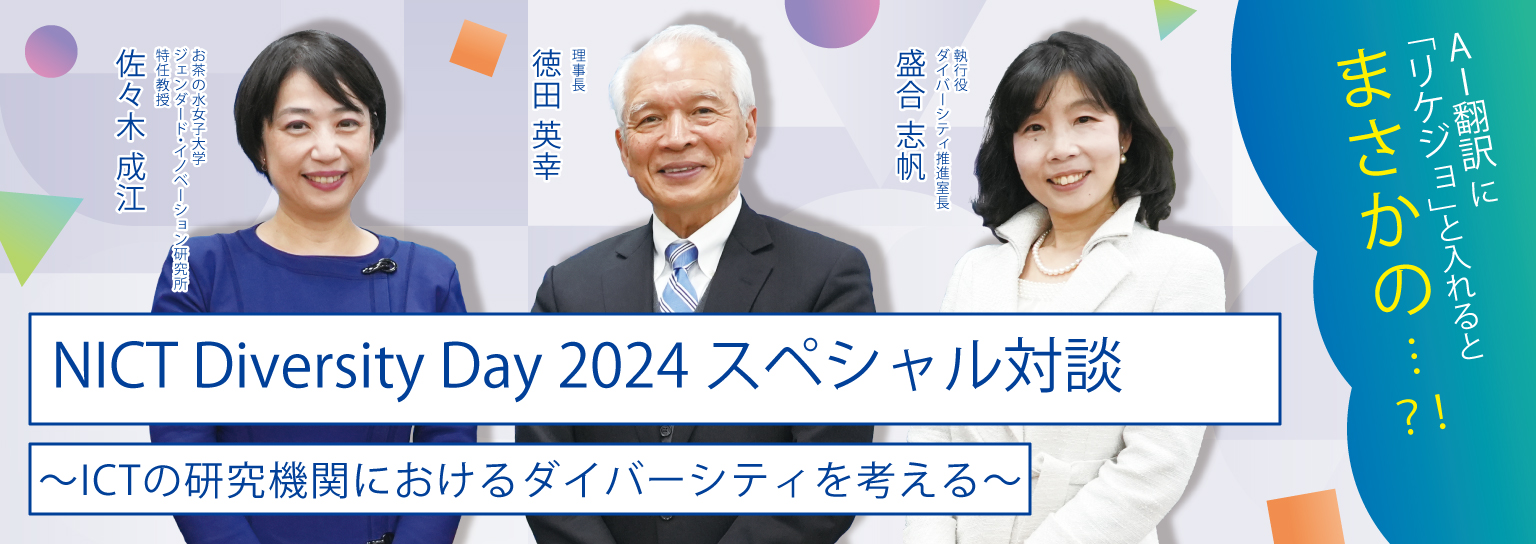Senior Executive Director MORIAI Shiho (hereafter, MORIAI):
Recently, with the advancement of AI research and development, NICT has been involved in various areas, but what kind of impact does gender bias have in the field of AI?
Professor SASAKI Narie (hereafter, SASAKI):
For example, a company was developing an AI system to assist in recruiting talent, but when terms like "woman" or "women's university" were included, the candidates were evaluated lower unfairly. This happens because the system learns from previous data, and the gender bias in that data is carried over. Similar problems can also be observed in AI translation. For languages with gendered nouns like French, when you input "I am a surgeon," it automatically uses the male form of "surgeon." On the other hand, when you input "I am a nurse," it automatically uses the female form of "nurse."
Furthermore, when you translate the term "a woman in science," it might come out as "a woman who pursues a career at the expense of love or feminine interests" (laughs). This is likely due to some deep-learning model making connections based on biased data.
MORIAI:
I see (laughs). When it comes to natural science data like space weather forecasts, I think gender gaps might not have as much impact. However, in areas where NICT is currently focusing, such as Large Language Models (LLM) and neuroscience, these biases could certainly have an influence. How do you think we should move forward in addressing this issue?
President TOKUDA Hideyuki (hereafter, TOKUDA):
Regarding input, we need to be mindful of the various backgrounds such as gender, age, race, ethnicity, and religion. We must avoid data sources that are likely to contain bias or collect data with caution. Just because we can collect data through online crawling doesn't mean we should do so without thinking, as there is a possibility of gathering data with unconscious biases. As for output, especially at NICT, in the case of generative AI like Large Language Models, output such as hate speech or violations of copyright can easily emerge. Therefore, we need to be creative in designing safeguards to prevent such issues.
SASAKI:
Yes, indeed. Recently, there has been a discussion about removing the gender field from data collection, but this has led to the issue of difficulties in collecting certain types of data. For example, in the U.S. in 2019, a man applied for a credit card. Despite his wife having a higher credit score, his credit limit was set at about 20 times higher than hers. He tweeted about it, and the incident caused an uproar, leading to an investigation by the New York State Department of Financial Services. The company responsible for the credit scoring system was very gender-conscious and removed the gender field from the application form. However, AI systems tended to classify individuals as female when any job-related or gender-related information was present, even if indirectly. To ensure that there are no hidden gender biases in algorithms, it's necessary to actively investigate gender and race. Personally, I feel that aiming for equality by hiding these attributes is not quite the right approach. We should aim for a society where everyone is equal while acknowledging and understanding these attributes. It's essential to investigate whether disparities arise based on these attributes and, if they do, to work towards eliminating those disparities in development.
MORIAI:
When we conducted the unconscious bias survey for our staff, we included a gender field. Of course, we also included an option to skip the question. However, it became clear that there is a significant difference in awareness between men and women. This made me realize once again how important it is to ask people about their attributes. By acknowledging these differences, we can better understand and address the unconscious biases that may exist.
















